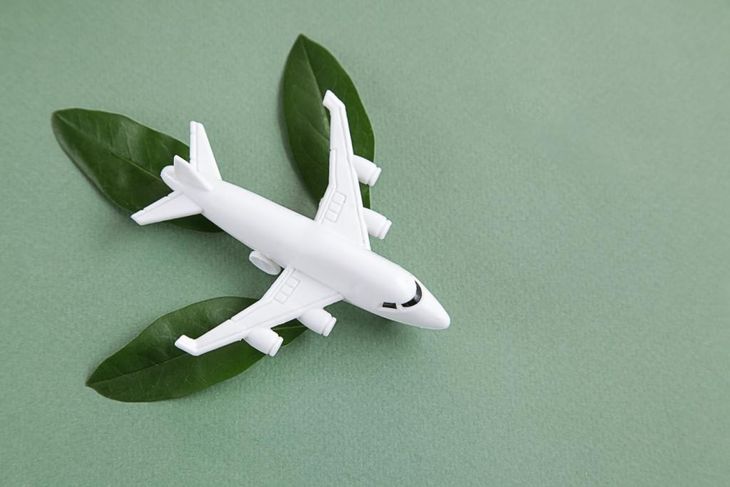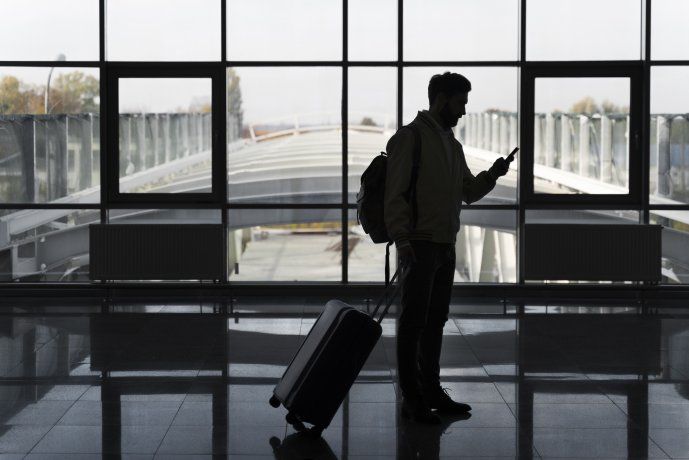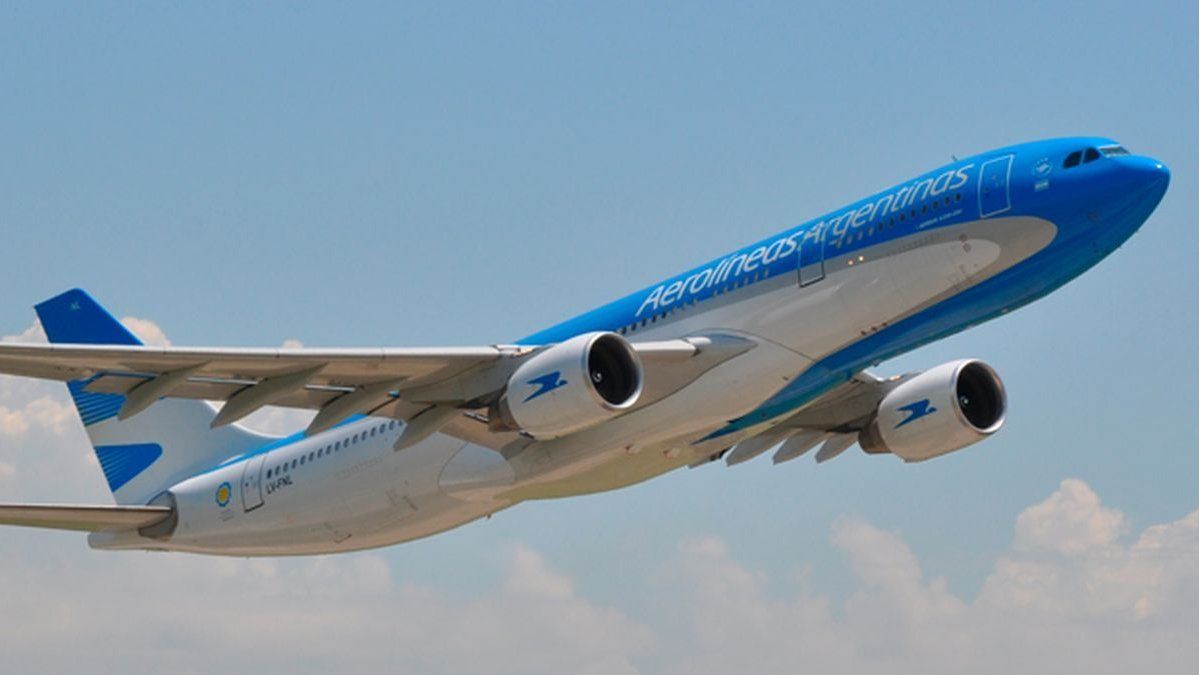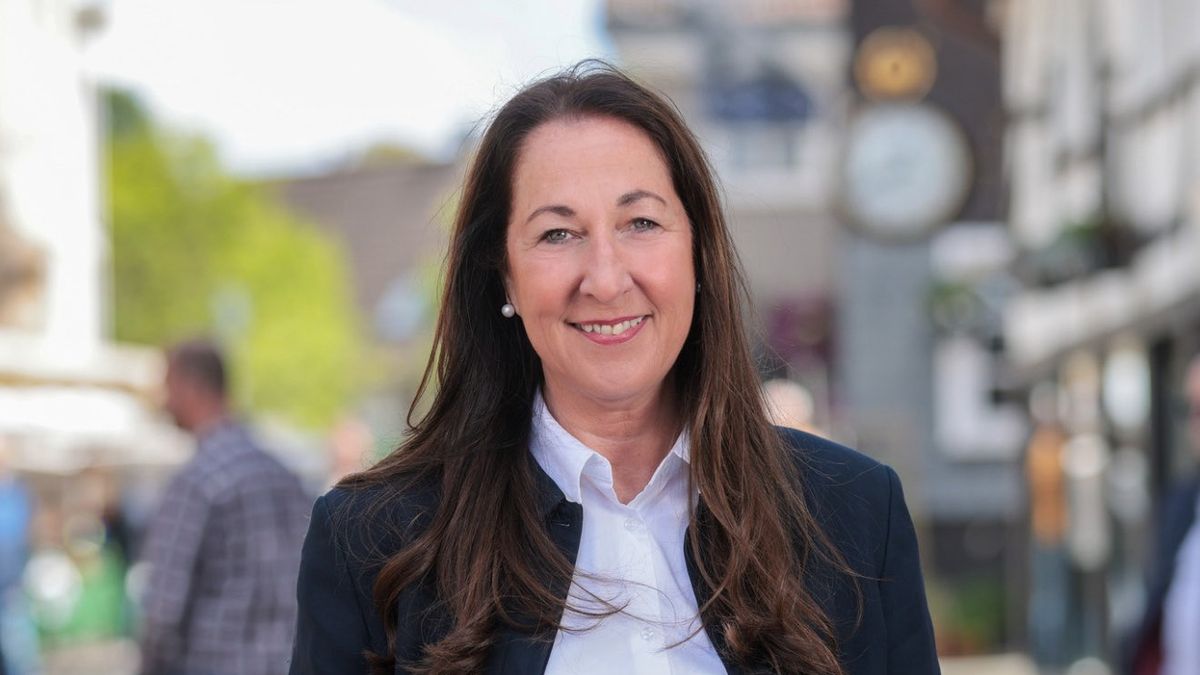However, there is optimistic calculations that they estimate that total production in 2022 could reach 450 million litersa scenario that places the SAF industry on the verge of an exponential increase in capacity and production towards an identified tipping point of 30 billion liters by 2030, with the right supportive policies.
Plane-Plane-Flights -Aeroparque-Aerolíneas Argentinas
Mariano Fuchila
Commitment to sustainability
Airlines are committed to achieving net zero CO2 emissions by 2050 and view SAF as a key contributor, with current estimates expecting it to account for 65% of the mitigation needed for thiswhich requires a production capacity of 450 billion liters per year in 2050.
In that sense, Aerolíneas Argentinas has been “working firmly for a sustainable present and future”and plans to establish a comprehensive agendathrough joint work between state agencies and private companies, indicated company sources.
“We develop different projects aligned to the Sustainable Development Goals (SDG) defined in 2015 by the United Nations Organization, within the framework of the 2030 Agenda on the Sustainable development. An opportunity for countries and their societies to embark on a new path in pursuit of improving life,” the sources said.
Sustainable Aviation Fuel.jpg

CO2 emission reduction
On what a long haul is, it was introduced modifications in the loading process and occupation of the warehouses making it more efficient and reducing consumption per transported ton.
Also, reductions in consumption are directly related to their Fuel Efficiency Program (PEC), which monitors and analyzes the way in which fuel is used in flight and the concept of “Free Route Airspace” (FRA), which consists of a system of navigation with different entry and exit points of airspaces with the objective of fly direct and improve flight path depending on the shortest distance.
Governments in the region now share the same goal for decarbonization with aviation, and therefore interest in the success of SAF.
“There was at least triple the amount of SAF on the market in 2022 than there was in 2021. And airlines used every drop, even at very high prices! If more were available, it would have been bought. That makes it clear that this is of a supply problem and that market forces alone are insufficient to solve it,” said Willie Walsh, IATA Director General.
travel-tourism

Canada: work and study.
freepik.es
He added that “governments, now sharing the same net-zero target by 2050, must implement comprehensive production incentives for SAF. It is what they did to successfully transition economies to renewable sources of electricity. And it is what aviation needs to decarbonize”.
To date, more than 450,000 commercial flights have been operated with SAF, and the increasing number of airlines signing purchase agreements with producers sends a clear signal to the markets that SAF is needed in greater quantities and so far in 2022 about 40 purchase agreements were signed.
Source: Ambito
David William is a talented author who has made a name for himself in the world of writing. He is a professional author who writes on a wide range of topics, from general interest to opinion news. David is currently working as a writer at 24 hours worlds where he brings his unique perspective and in-depth research to his articles, making them both informative and engaging.




